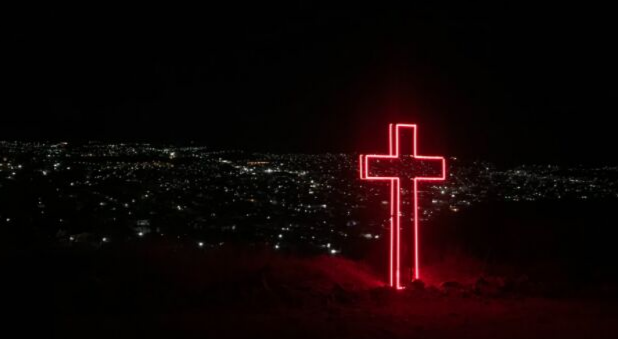Australia is a big country. We are a big people and apparently getting bigger. When we go on holidays, we like to look at big things. We have a big rock in the centre of our land; we have the world’s biggest reef just off our coast. And if naturally big things weren’t enough, we also like to make big things.
If a town wants to attract tourists, it simply makes a big thing and asks people to come and look at it. On our family trips north up the NSW coast the Big Banana was always a required stop. But there’s more. You know them. We also have the Big Prawn, the Big Merino, the Big Pavlova, gold panner, oyster, trout, barramundi, cow, cassowary, crocodile, lobster, koala, strawberry, potato, lawnmower and golden guitar. Even as you read this list you will be thinking of your own favourite big thing.
It seems in Australia we really like everything big except Jesus.
Australia is the land of the small Jesus, the constrained Christ: he might be admired as a maverick or revolutionary, revered as a great teacher or perceptive philosopher, respected as a wise person, moral and upright individual. He’s someone who is always good for a quote, liked as a great bloke – maybe even suggested as one of the most influential people that ever lived. All these may be true in their own way but not the whole truth.
"Jesus is someone always good for a quote"
As John introduces his biography of Jesus, he paints the biggest possible picture of Jesus he can. In the first four chapters he introduces Jesus to his readers, and it is breathtaking.
The breathtaking Jesus in the Bible
In John 1 alone, Jesus is referred to as the Word of God, the one who shares divinity as God, the light, the source of life, the unique Son, the one who truly reveals God, the Lamb of God who takes away the sin of the world, the one on whom the Spirit remains, the one who will baptise with the Spirit, the Son of God, Rabbi, the Messiah, the one Moses and the prophets wrote about, the son of Joseph, the King of Israel, and then finally the Son of Man.
This is a vast array of titles, each with a background to be explored; each helping us to understand an aspect of Jesus; each contributing to a marvellous whole.
In chapter 2, John goes on to show how Jesus will bring life. Jesus hints that this will be though his death as he challenges the Jews to destroy his body (“this temple”) and he will raise it again in three days.
John shows Jesus hinting at how he will make everything new as Jesus brings new wine (John 2), promises a new temple (John 2), speaks of new birth (John 3) and looks forward to a time when worship of God will be renewed (John 4).
Jesus will bring life
Finally, in John 4 Jesus is acclaimed by a Samaritan village as truly the saviour of the world. The big Jesus indeed.
As we teach youth and children about Jesus, we might be tempted to teach a small Jesus. Yes, to little people Jesus is our special friend in heaven. But as John and the rest of the New Testament writers help us to see, he is so much more.
Let’s introduce the young people in our churches to the big Jesus in all his majesty, richness and depth. Because it is only a big Jesus who will be worthy of their (and our) trust and worship. It is only a big Jesus who will be followed in a world full of bewildering, and attractive alternatives.
Will our churches be places where people worship the big Jesus
May our churches be places where all people – young and old – come and see, and trust, and obey, and serve, and love, and honour, and worship, the big Jesus.
The Rev Dr Bill Salier is the principal of Youthworks College. He has a special interest in John’s Gospel.

















